Table 31 Vibrachrome Archival Print of Anatomical Marble Mosaic
$ 12,000.00
Table 31— the muscles from the side and back
Using marble, stone and precious gems I am creating a series of 14 mosaics that replicate Bartolomeo Eustachi’s 16th Century anatomical engravings.
The original mosaics of my Anatomy Set in Stone project are not for sale— they are being created as traveling museum show, and will be kept together as a set.
I am selling extremely high end archival prints of the mosaics that allow them to be reproduced at life size with even the smallest details, colors and texture readily visible.
Three sizes are available:
48 inches by 84 inches
24 inches by 42 inches
8 inches by 14 inches
Free delivery is included in the purchase price.
Advantages of prints over the original mosaic
- Each of the mosaics in the series represents 500-600 hours of labor. The price I would have to charge for the originals is over $30,000 apiece.
- The original mosaics weigh between 300 and 350 pounds. The prints on aluminum weigh next to nothing by comparison.
- Mosaics are very durable and can last thousands of years, but they are vulnerable to being scratched or damaged. Vibrachrome prints have a baked on, gloss enamel coating that is extremely durable. Rubbing a coin against it will not scratch it. Perfect for high-traffic public spaces!
- Vibrachrome prints come ready to hang and need no framing, matting or glass (custom framing can often cost more than the art itself).
- Slight variations in the surface of mosaics can make them very difficult to light without glare. The flat surface of the prints makes them easy to light.
For more details about the Anatomy Set in Stone project, visit this page on my site.
About the prints
The originals have been photographed with a large format camera on actual film, scanned on a drum scanner, and color corrected by Duggal Visual Solutions, one of the world's leading leading photography and print labs.
Vibrachrome™ is an archival dye-sublimation print on aluminum with 1440 dpi print quality. The ink is transferred to the aluminum at 400 degrees, and cools to form a permanent and scratch-resistant coating that will hold up indoors, outdoors and in high-traffic public spaces. All prints include a low profile brace for hanging.
Who was Bartolomeo Eustachi?
Bartolomeo Eustachi, one of the first modern anatomists, is also considered the first comparative anatomist, as he was the first to use examples from the animal realm for comparison and clarity. Eustachi was a contemporary of Vesalius, and they share the credit of having created the science of human anatomy. In 1552 (nine years after Vesalius published his Fabrica) Eustachi completed a series of anatomical illustrations so accurate that had they been published in his lifetime, a modern understanding of anatomy might have come to pass two centuries before it was attained.
Sadly, all but eight of the drawings were lost for 162 years following his death. The engravings were re-discovered in the early eighteenth century and purchased by Pope Clement XI, who gave them to his physician Giovanni Maria Lancisi. Lancisi, a successor to Eustachi in the chair of anatomy at the Sapienza, published the plates in 1714 as Tabulae anatomicae Bartholomaei Eustachi quas a tenebris tandem vindicatas (Anatomical Illustrations of Bartholomeo Eustachi Rescued from Obscurity).
Related Items
Table 21 Vibrachrome Archival Print of Anatomical Marble Mosaic
$ 900.00
Table 21— the nerves and muscles from the front Using marble, stone and precious gems I am creating a series of 14 mosaics that replicate... View full product details
Table 23 Vibrachrome Archival Print of Anatomical Marble Mosaic
$ 900.00
Table 23— the nerves and muscles from the back Using marble, stone and precious gems I am creating a series of 14 mosaics that replicate... View full product details
Table 28 Vibrachrome Archival Print of Anatomical Marble Mosaic
$ 900.00
Table 28— the muscles from the front Using marble, stone and precious gems I am creating a series of 14 mosaics that replicate Bartolomeo Eustachi’s... View full product details
Table 30 Vibrachrome Archival Print of Anatomical Marble Mosaic
$ 900.00
Table 30— the muscles from the side and front Using marble, stone and precious gems I am creating a series of 14 mosaics that replicate... View full product details









